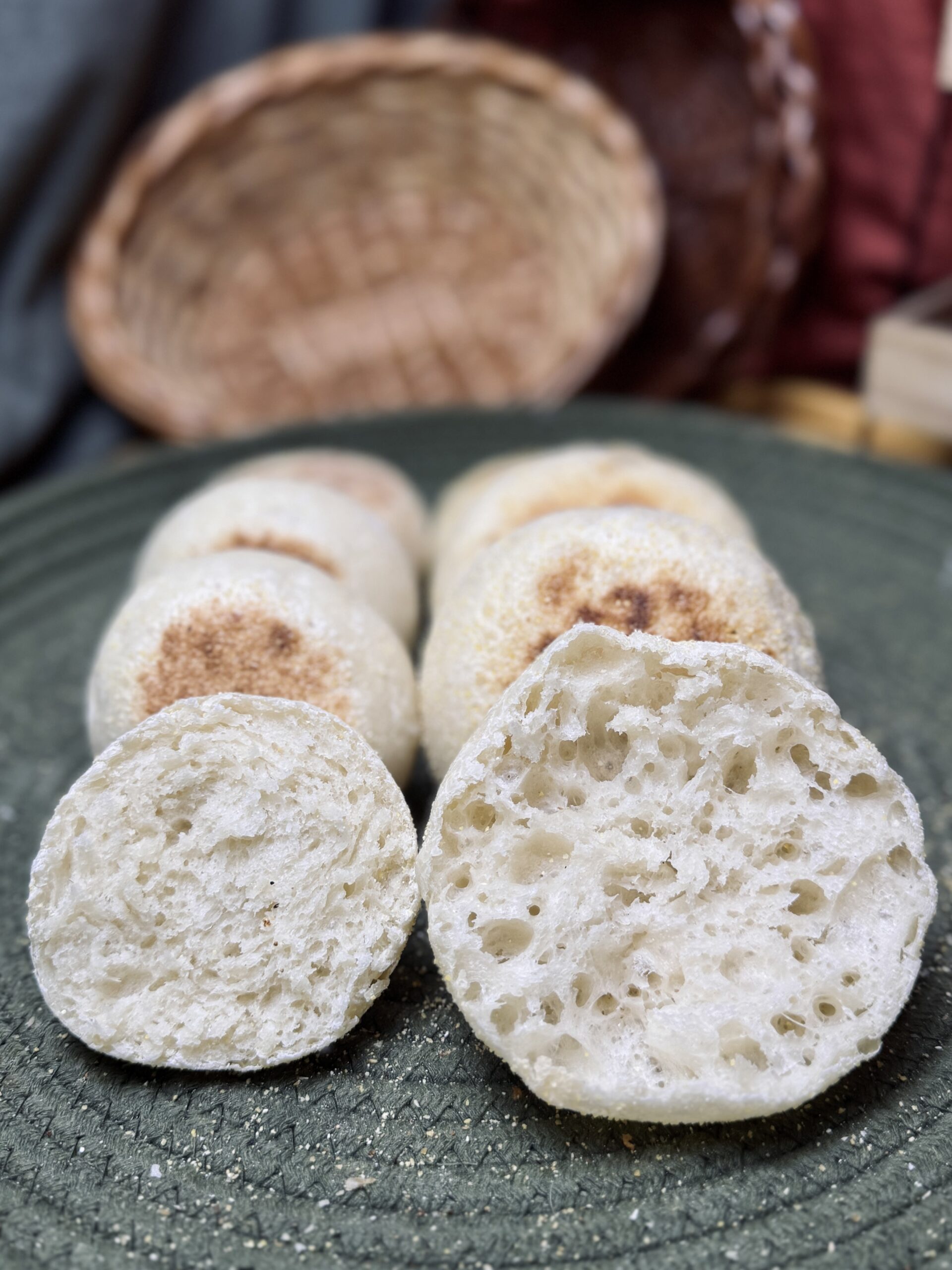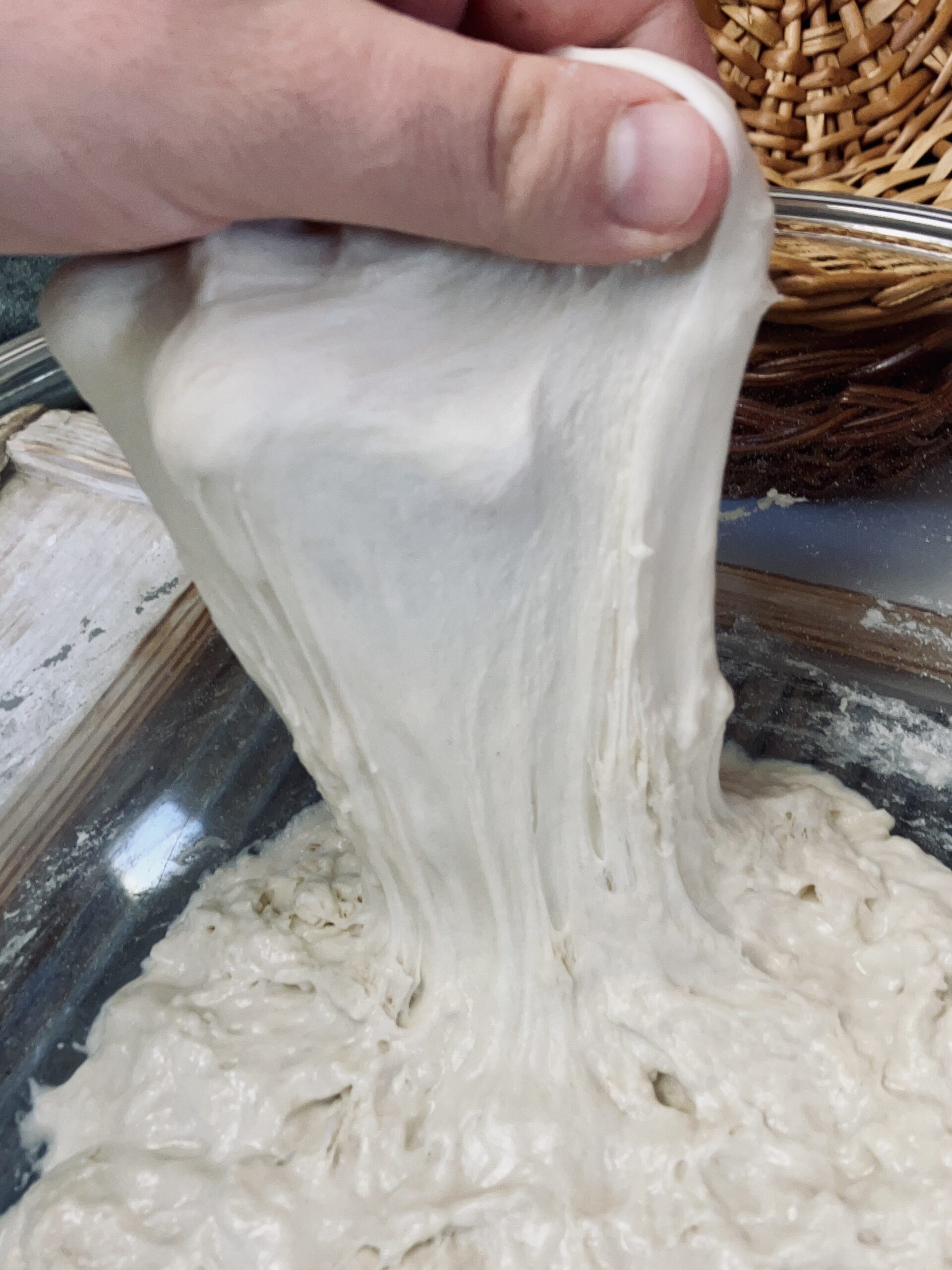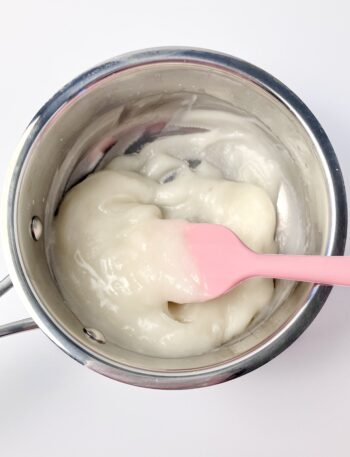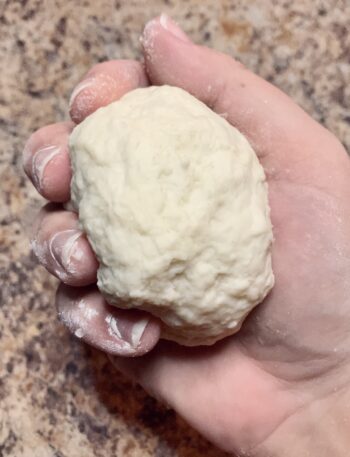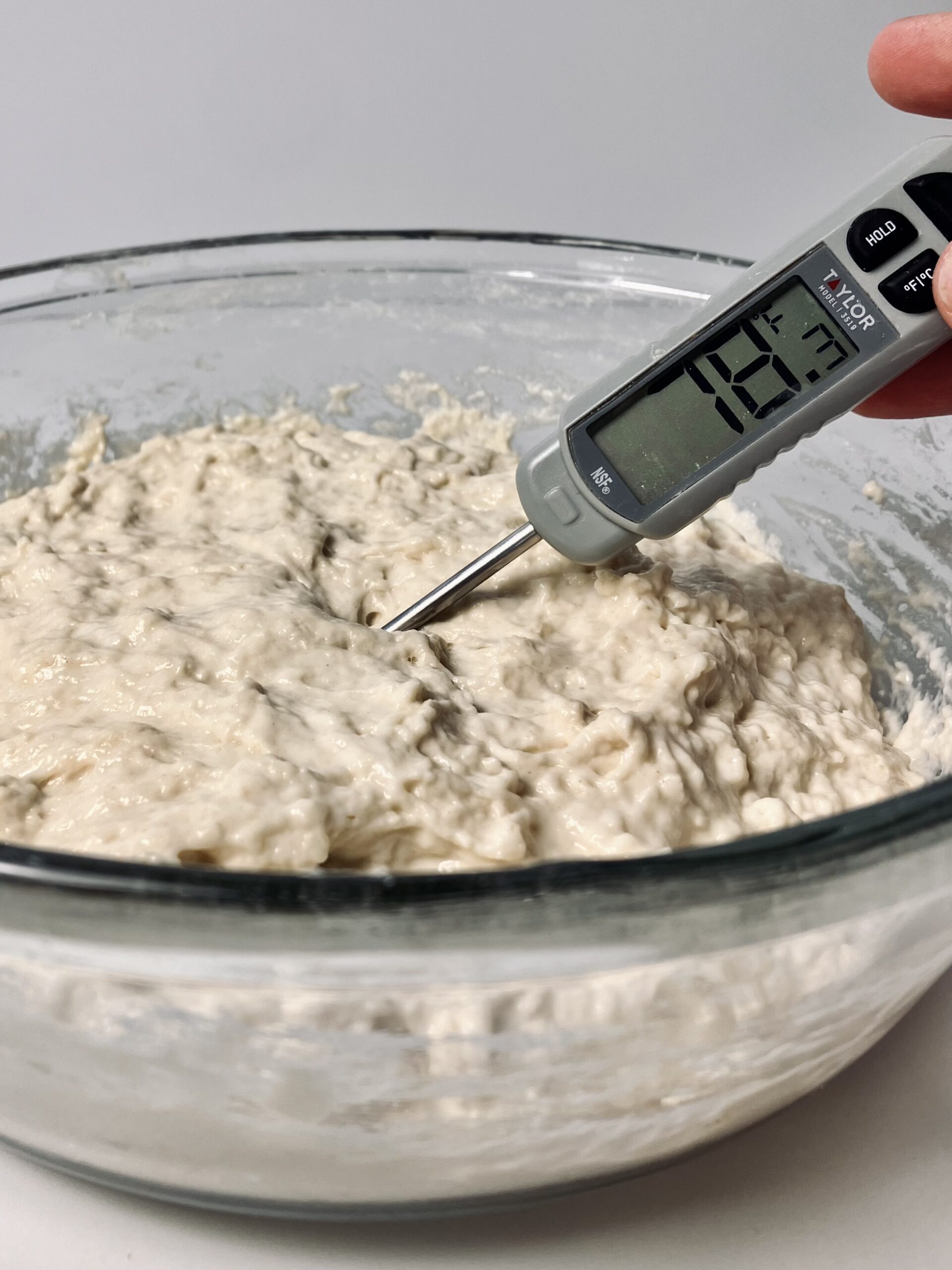Milk is a popular ingredient among English muffin recipes across the web. In fact, during my initial research of this recipe, I found most recipes contained a large percentage of milk. I also observed that most recipes online were not achieving the desired “nooks and crannies” that many strive for when making English muffins. As I set out to build my perfect English muffin recipe, I began to compile a list of English muffin “secrets” that lead to the best results. One of the biggest “secrets” is liquid choice. Though liquid choice is not the only component to achieving the perfect English muffin, it is an important one and I felt it deserved extra explanation and detail. My full English muffin recipe with all the “secrets” can be found here.
What Is The Desired Outcome Of A Homemade English Muffin?
When asking my social media following what is most important in an English muffin, they noted two things: a) nooks and crannies and b) the gritty cornmeal on the outside. The latter is easy to manage, but the nooks and crannies are much more difficult. So many components come together to achieve perfect nooks and crannies in an English muffin – liquid choice being one of them.
Not only does liquid effect the crumb, but also many other factors, including: how the dough handles, ferments, cooks, browns, and even the final texture and density. If you are going for a denser, softer English muffin, you will want to choose a different liquid than if you were going for a light and airy English muffin.
Altogether, the desired outcome of an English muffin is going to depend on personal preference. For me, the choice is:
- Light and airy
- Nooks and crannies
- Puffy, but not too puffy (I do not care for so much bread in my English muffin breakfast sandwiches that it overpowers the fillings)
- Gritty cornmeal texture on the outside
- Classic flat top and bottom with a dark (but not burnt) surface from frying
How Does Liquid Choice Affect The Desired Outcome?
Of the attributes listed above that make up my perfect English muffin, liquid choice is going to affect the following:
- The texture of the muffin and overall density: light and airy or dense and soft
- Crumb structure: whether clear, defined nooks and crannies are present
- Darkening/burning on the outside of the muffin during frying
Though these are the main, most important effects of liquid choice, liquid can also affect:
- The dough feel and texture during gluten development, fermentation, and shaping
- How the muffins rise and bake
- The final, overall flavor




Milk And English Muffins
Milk has its place in the bread-making world. It can turn out excellent results in many bread recipes. In others, though, milk just is not a good fit. Is it a fit for English muffins? Well, that is for you to decide.
Milk’s effects –
- Dough handling: Milk is a tightening agent, meaning it creates a stiffer, less extensible dough (the dough is not as stretchy). This means it affects the dough’s consistency, making it easier or more difficult to work with, depending on the recipe and amount of milk used. For English muffins, a milk-based dough is very elastic, making folds (the method of dough development used in my recipe) much more difficult (and maybe not the best method of choice for a milk-based dough).
- Fermentation: Milk slows fermentation because it creates a thicker balloon (more elastic gluten network) that takes more air to blow up. This leads to the need for more sourdough starter, longer fermenting times, or warmer liquid temperature during the initial mix to help the dough rise reasonably.
- Crumb structure: The proteins in milk, particularly casein, contribute to a finer crumb structure. This results in a more uniform and even crumb, which can be desirable in many types of bread. For English muffins, though, this means the nooks and crannies are near impossible to achieve.
- Softness: The fats and proteins milk imparts to the dough will lead to a softer, more tender crumb and texture. In English muffins, milk will create a “soft and fluffy” end result.
- Flavor: Milk imparts a subtle, creamy flavor to the bread, as well as a subtle sweetness due to the lactose.
- Density: Milk will create a denser overall end result. If a thick and heavy English muffin is the desired outcome, milk as the primary liquid would be a good choice.
- Color: The proteins and sugars in milk help with the Maillard reaction, which results in a deeper, golden-brown crust, especially when compared to a water-based bread. Milk-based breads baked at higher temperatures tend to darken very quickly, and even burn. For English muffins, this means the low and slow cooking method is a must if using milk as the primary liquid, otherwise the outside will burn before the inside is fully cooked.

Water And English Muffins
Water is an extremely common, fundamental liquid in bread-making, used in many types of bread doughs. This is all for good reason: water influences various aspects of the dough’s behavior and characteristics of the final bread.
Water’s effects –
- Dough handling: A water-based dough is fairly easy to handle, mostly dependent on the overall hydration of the bread. For English muffins, a water-based dough is more extensible and loose, easier to manage during folds (my choice for dough development for this bread). It also tends to be slightly stickier than a milk-based dough.
- Fermentation: Water-based doughs set the standard for fermentation. While water temperature can affect overall fermentation speed, a water-based dough will generally rise faster than a milk-based dough, due to the more extensible gluten network.
- Crumb structure: Water is always going to lead to a more open and airy crumb, though the exact amount of “open” and “airy” is also dependent on overall dough hydration and fermentation. For English muffins, this means it is possible to achieve beautiful nooks and crannies, in addition to a light flavor, with a water base.
- Softness: A water based dough is not particularly “soft” or “fluffy,” thus, using water as the main liquid in English muffins leads to a less tender crumb and texture.
- Flavor: Water itself does not influence the flavor of the bread, though the amount of water added can influence flavor development during fermentation. English muffins made primarily with water do not impart any sort of sweet or creamy flavor.
- Density: Water will create a lighter overall end result. If a light and airy English muffin is the desired outcome, water as the primary liquid would be a good choice.
- Color: Breads made with water need to be baked at high temperatures in order to brown properly on their own, and require a wash (like an egg wash) to encourage darkening when baked at lower temperatures. This is because water itself does not include proteins and sugars that encourage a Maillard reaction, which just means the bread will not turn brown. For English muffins, this means the muffins can be fried at a higher heat initially without fear of burning, which helps with the initial spring and overall crumb structure.

Comparison Video: Milk Versus Water In English Muffins
What Liquid Do You Use For Your English Muffins?
For my English muffin recipe, I choose to use a heavy water base with a small amount of milk. I think the combination balances well. The heavy water base gives the muffins an overall light and airy texture, as well as opens the crumb (nooks and crannies) and allows the muffins to be fried over a higher heat initially. The small portion of milk adds a touch of softness and depth of flavor to the dough, as well as enhances the color on the outside of the dough during its short frying time. Even though milk is a tightening agent and can close your crumb, there is not enough of it in my recipe to take away your gorgeous nooks. In fact, it may even help you obtain a taller English muffin and allow fermentation to be just a bit more flexible. In the end, I leave this choice up to the baker, as the recipe can be easily made with 100% water, if desired. Find my full English muffin recipe below:


